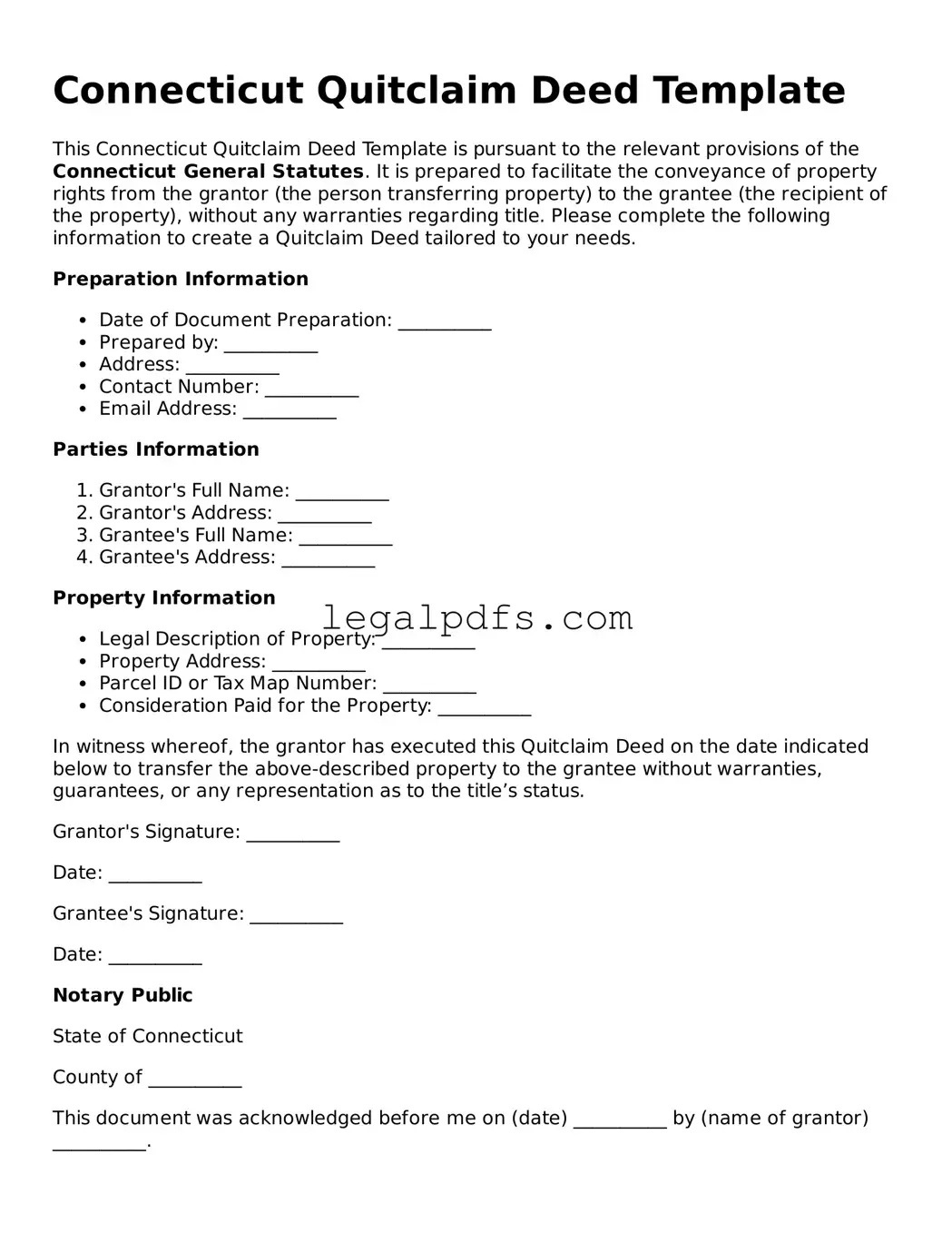What is a Connecticut Quitclaim Deed form?
A Connecticut Quitclaim Deed form is a legal document used to transfer ownership of real estate in the state of Connecticut without any warranties or guarantees about the title. This means that the seller, known as the grantor, does not promise that they hold clear ownership of the property or that the title is free from claims. It's a simple way to transfer property between family members or into a trust.
When should I use a Connecticut Quitclaim Deed?
You might use a Connecticut Quitclaim Deed when transferring property to a family member, adding or removing someone's name from the property title, transferring property to a trust, or in situations where the property is being gifted and not sold. It is most often used among parties who trust each other, as it offers minimal protection for the buyer.
What information do I need to fill out a Quitclaim Deed form in Connecticut?
To complete a Quitclaim Deed in Connecticut, you will need specific information including the name and address of the grantor and grantee, a legal description of the property (not just the address), the county where the property is located, and the consideration being given for the transfer, if any. You'll also need to have it signed by the grantor and notarized.
Does a Connecticut Quitclaim Deed need to be notarized?
Yes, in Connecticut, a Quitclaim Deed must be notarized to be considered valid. The grantor is required to sign the deed in the presence of a notary public, who verifies the identity of the signer and ensures that they are signing voluntarily.
After completing a Quitclaim Deed form, what's the next step?
Once the Quitclaim Deed is completed and notarized, it needs to be recorded with the town clerk in the town where the property is located. This places the information in the public record, providing notice of the transfer to any future purchasers or financiers of the property.
Is a Quitclaim Deed the same as a title or warranty deed?
No, a Quitclaim Deed is not the same as a title or warranty deed. Unlike warranty deeds, Quitclaim Deeds do not guarantee that the property title is clear of liens or other encumbrances. Quitclaim Deeds simply transfer the grantor's interest in the property, if any, to the grantee without any guarantees.
Can you revoke a Connecticut Quitclaim Deed after it's been recorded?
Once a Quitclaim Deed is executed (signed, notarized, and recorded), it is very difficult to revoke or cancel. Any attempt to undo the transfer typically requires a new deed or legal action, and the cooperation of both the grantor and grantee is often necessary. It's crucial to be certain about transferring property before executing a Quitclaim Deed.
How does a Quitclaim Deed affect the grantee's ownership in Connecticut?
A Quitclaim Deed transfers whatever interest the grantor has in the property to the grantee. However, since it comes with no guarantees, the grantee may later discover issues with the title or ownership that could affect their rights. This is why it's particularly important to trust the grantor and potentially conduct a title search beforehand.
Are there any specific considerations in Connecticut I should be aware of before using a Quitclaim Deed?
In Connecticut, it's important to ensure that the Quitclaim Deed is properly drafted to meet state requirements. Additionally, consider conducting a title search to understand any potential liens or encumbrances on the property. Consulting with a legal professional can provide guidance tailored to your specific situation, helping to minimize risks associated with the transfer.
